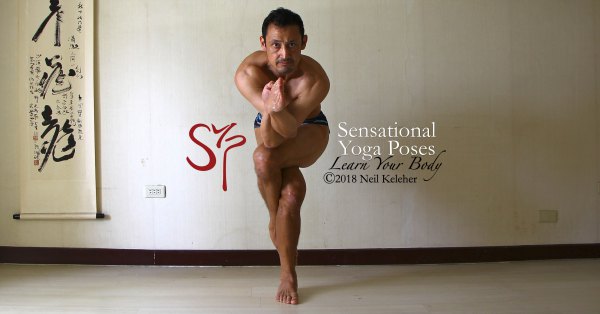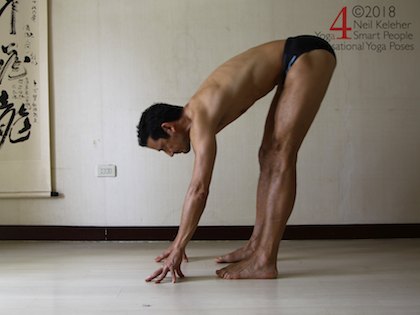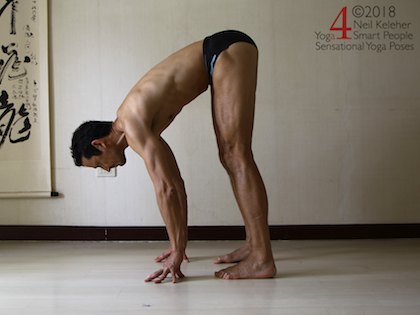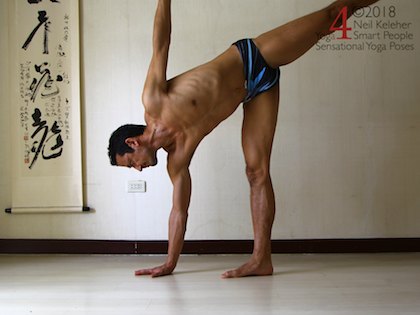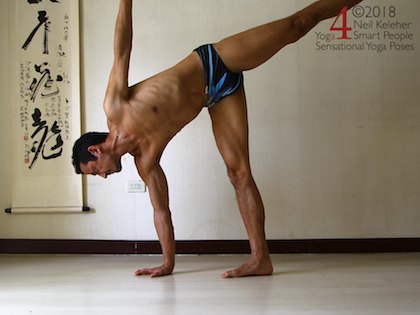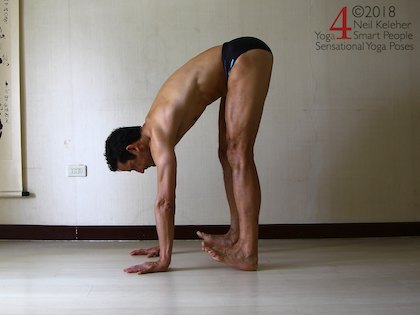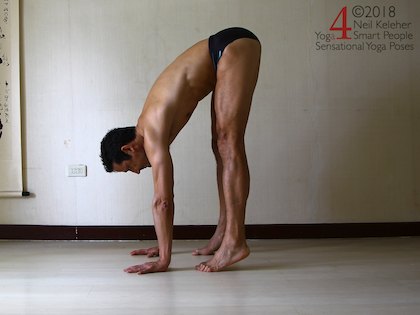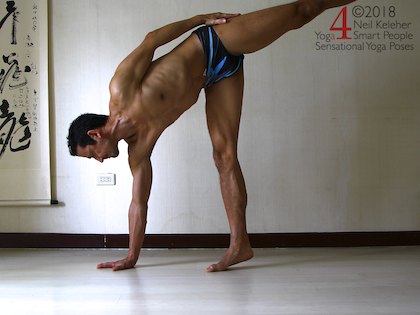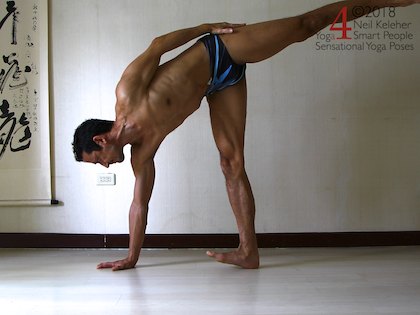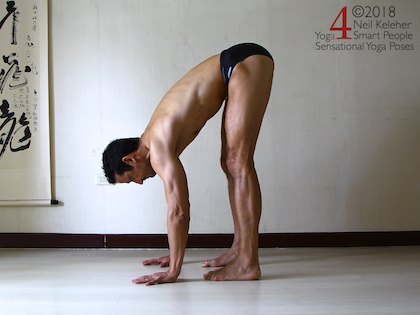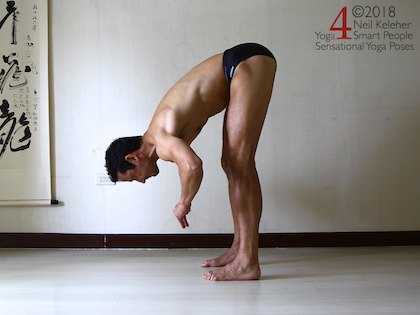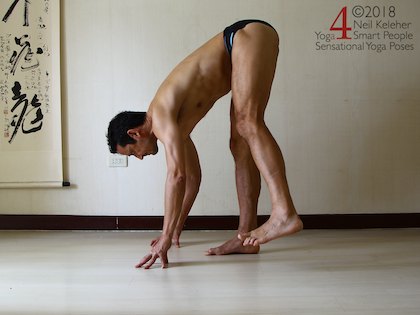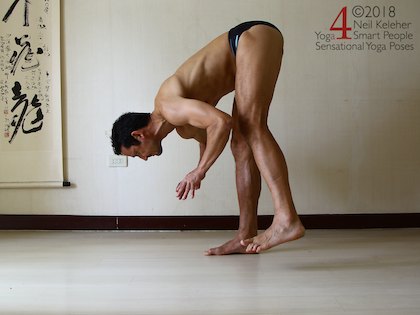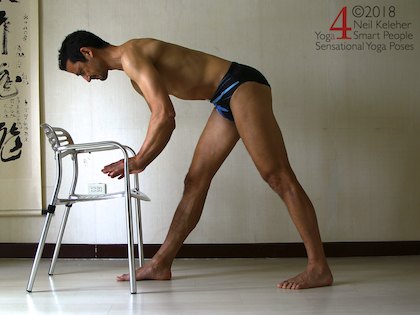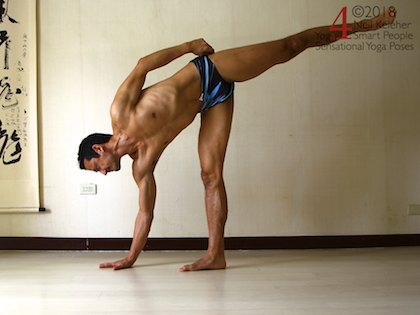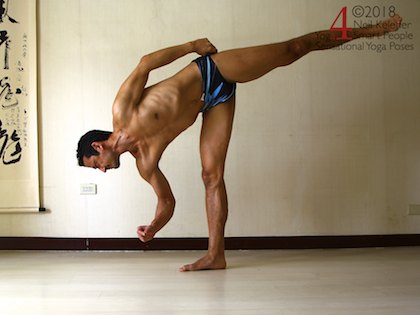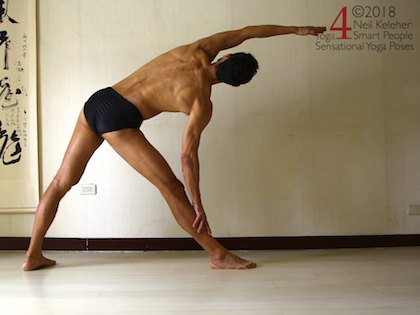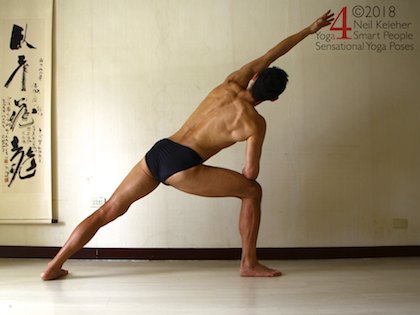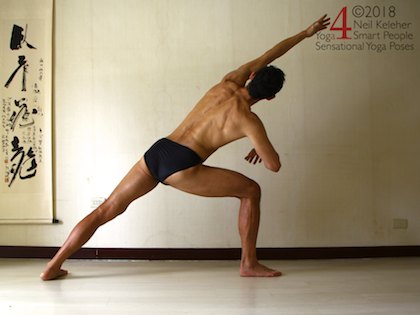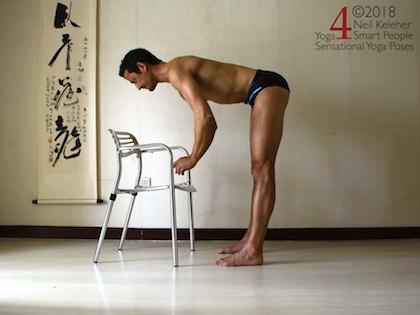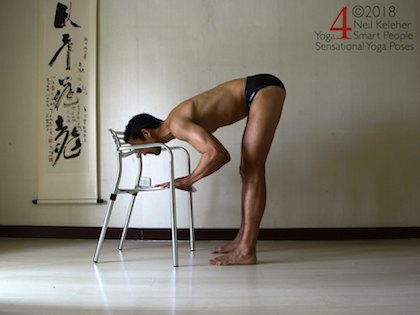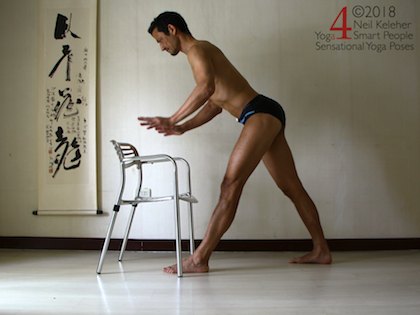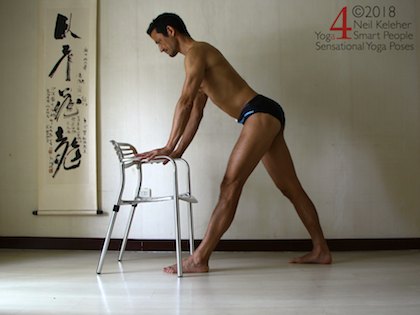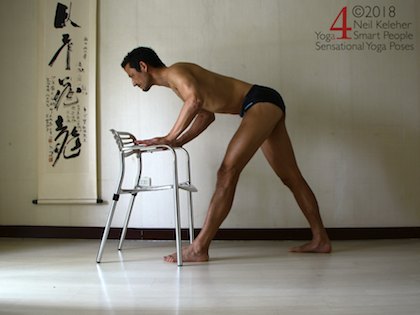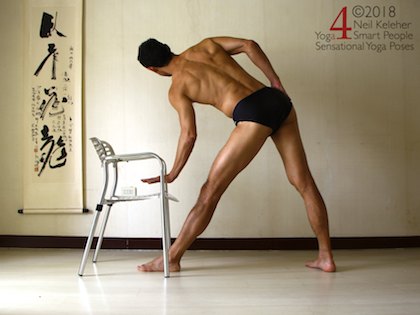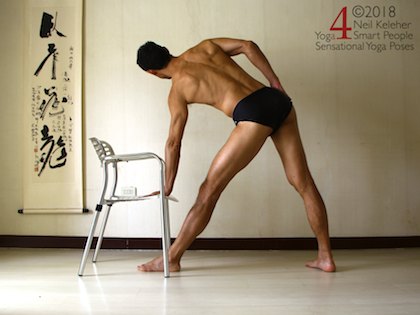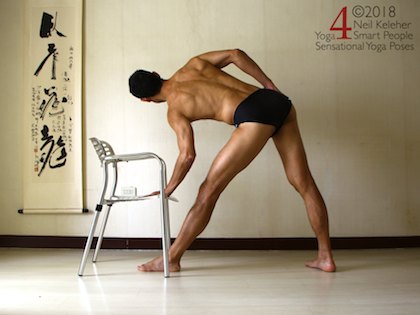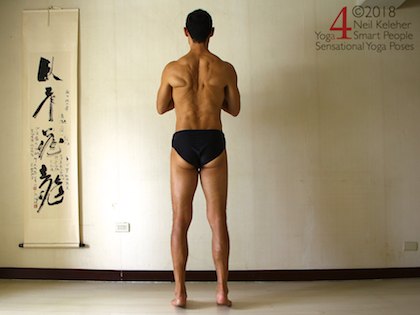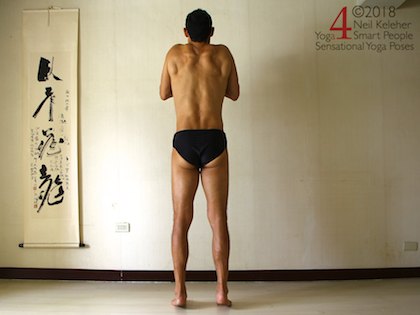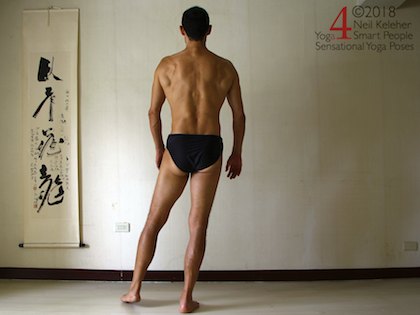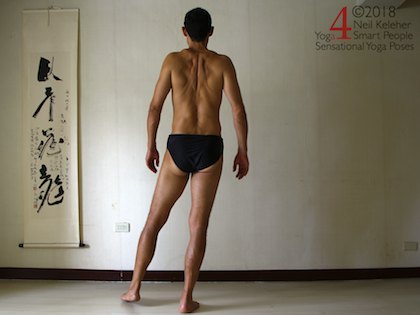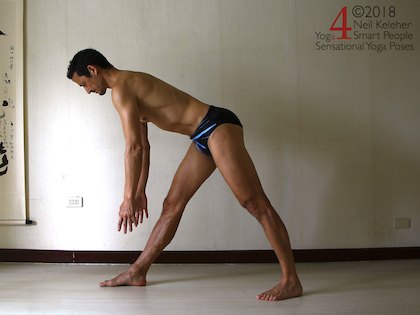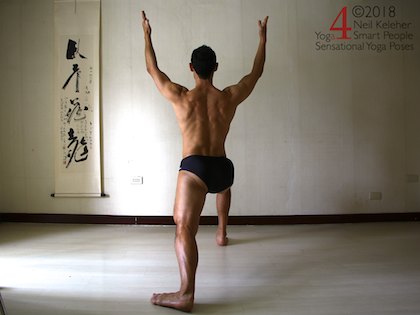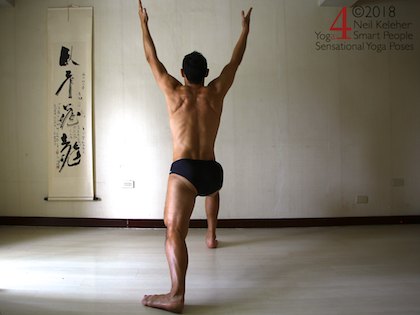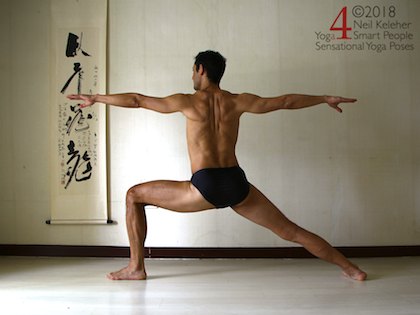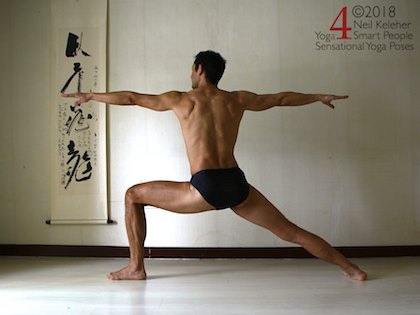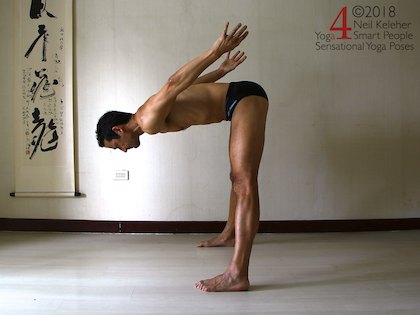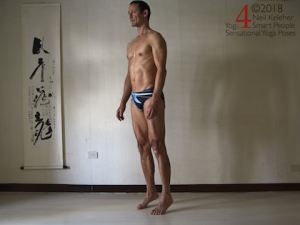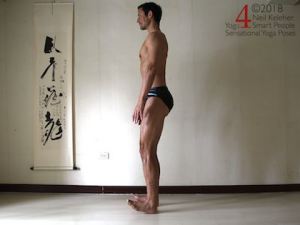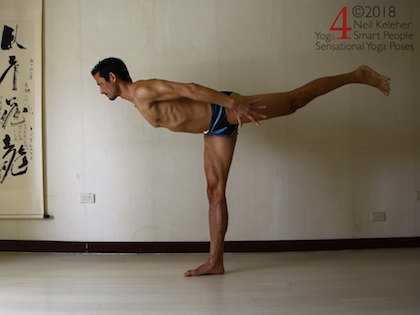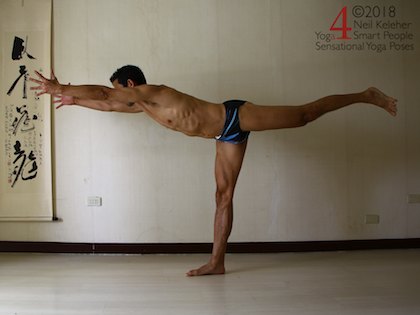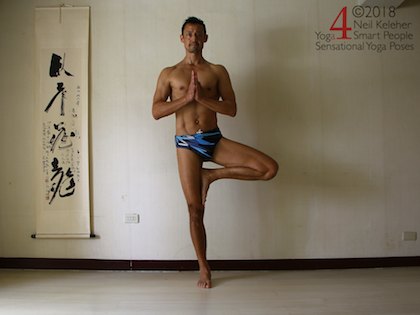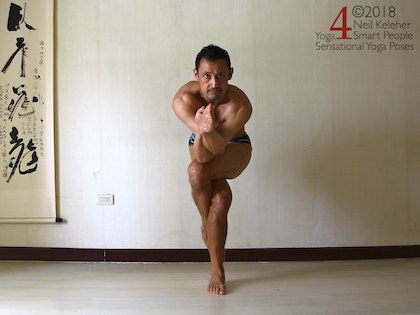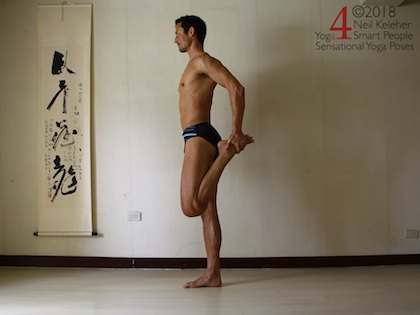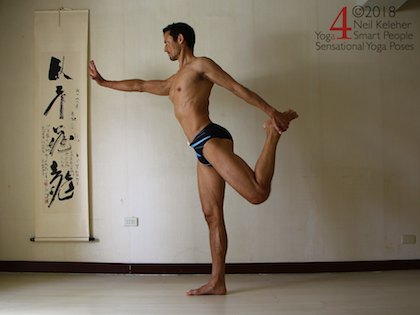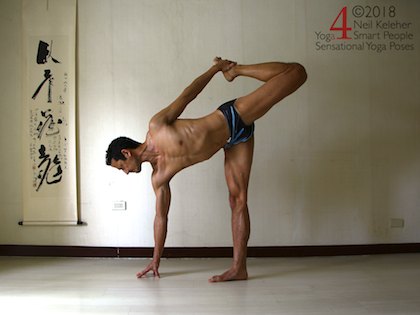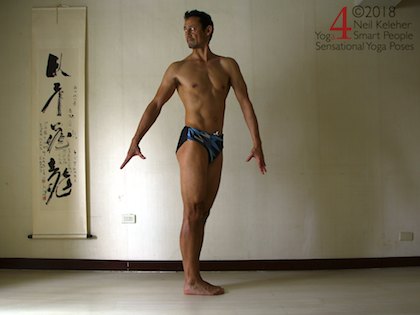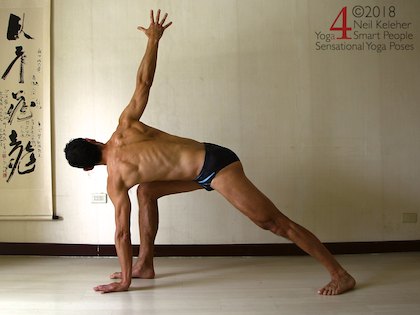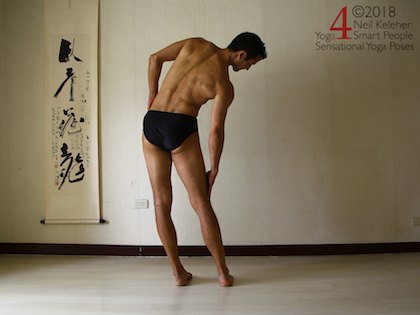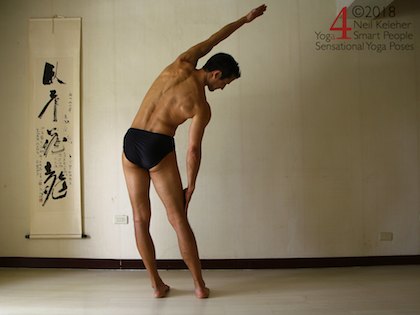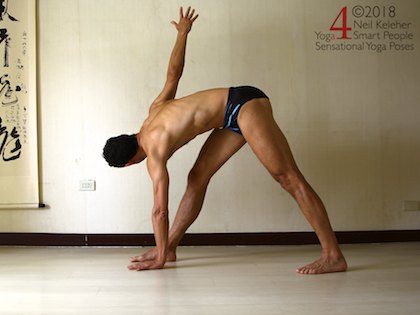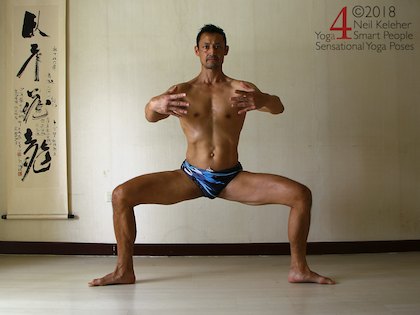8 Reasons to do Standing Yoga Poses
Eight simple actions for improving body awareness in a variety of standing yoga poses
Standing yoga poses can be used in a variety of different ways.
Rather than saying "This Standing Pose Does This (and only this)", the idea is that you can do standing yoga poses (and yoga poses in general) in such a way as to suit that intent.
The eight reasons to do yoga poses listed here are actually eight different actions or ideas that you can practice so that you can better learn your body.
Poses (and actions) include: balancing on forefeet, balancing on heels, shoulder blade protraction and retraction, standing forward bend, standing forward bend on one leg, half moon, pyramid pose, triangle pose, side angle pose, warrior 1, warrior 2, wide leg standing forward bend, warrior 3, tree pose, eagle, standing quad stretch, bow pose on one leg, standing twist, twisting side angle, standing side bend, twisted triangle and sumo squat.
8 reasons to do standing yoga poses TOC
Below are 8 possible ways (intents or purposes) that you can deliberately use standing yoga poses.
Standing poses are a great way to practice feeling your center of gravity. So that you can learn to feel your center of gravity, practice shifting your body relative to your feet. Notice the changes in pressure in your feet as you do so.
Standing Forward Bend Weight shift
Half Moon weight shifts
Forward bend with heel/forefoot lift
Half moon with heel/forefoot lift.
For some very basic foot control exercises, check out these foot exercises. I developed them in order to counteract my collapsed arches.
Change isn't a bad thing. The idea of learning to feel your body and control it is so that you can create desired changes while preventing undesired changes.
For the standing poses below, position your weight over your your forefeet (or somewhere over your feet for pyramid). Then, while preventing your pelvis and torso from shifting backwards, lift your hands straight up by bending your elbows. Then touch them down to the floor.
Repeat the hand lifts a few times in each pose. Notice how your feet and legs activate prior to relaxing your hands and how they can relax when you put your hands back down.
If you've got tight or inflexible hamstrings, standing poses can be used to both stretch them and strengthen them.
With standing hamstring stretches you can use your arms to support the weight of your upper body so that your hamstrings can relax.
So that you can feel your hamstrings activate, try lifting your hands without allowing your body to move.
Then after you put your hands down, notice your hamstrings relax and as they relax you can try sinking your upper body by allowing your elbows to bend.
Standing forward Bend
Pyramid pose
Triangle Pose
Standing poses can also be used to practice unweighted shoulder awareness and shoulder control exercises. You can practice shoulder blade elevation, depression, protraction and retraction.
Mountain, (depress and elevate shoulders)
Balancing On One Foot (protract and retract shoulder blades)
Pyramid Pose (retract)
Warrior 1 (elevate shoulders with arms lifted)
Warrior 2 (retract and protract shoulder blades)
Wide Leg Forward Bend (retract shoulder blades)
You can also use standing poses to practice understanding balance
- Eagle
- Quad Stretch
- Dancing Bow
- Dancing Bow Variation
You can use standing poses for full body twisting and side bending.
The standing twist and standing spinal side bend, below, work on both the spine and the hips!
- Standing twist (spine and hips)
- Lunging (side angle) twist,
- Standing spinal side bend (spine and hips)
- Spinal Side Bend with Arm Reach
But you can also use them for spinal front bends and spinal back bends (which also can affect the hips. Speaking of which...)
One other use for standing poses that I'll mention here, particularly if you can stabilize your hips, is that they can be used to reactivate your hips after deep hip stretches. If your hips feel loose or "fragile" after lots of deep stretching, try reactivating them with half moon, triangle twist or even a sumo squat.
In all of these standing yoga poses, don't just rely on the shape of the pose to stabilize your hips. Consciously activate your hip muscles to work at stabilizing your hip joints.
- Triangle twist
- Sumo Squat
Neil Keleher
Published: 2013 05 26
Updated: 2023 03 23
8 Reasons to Do Standing Yoga Poses
Return to TOP of Page
